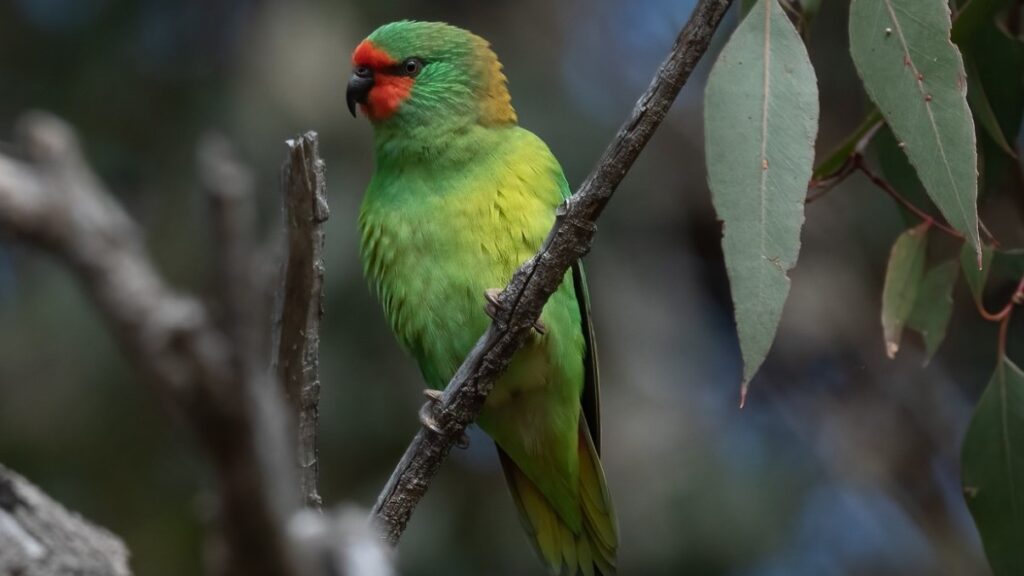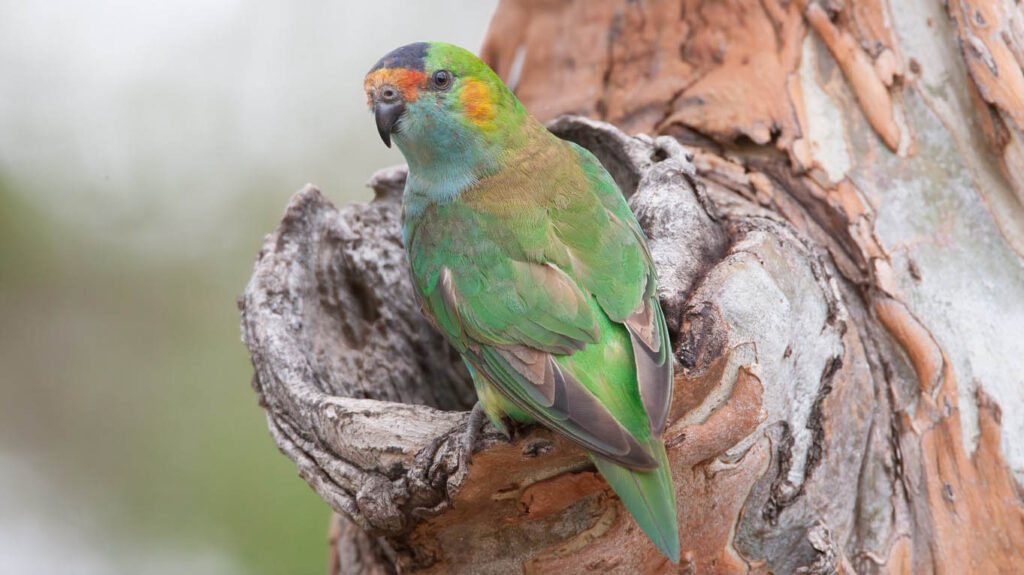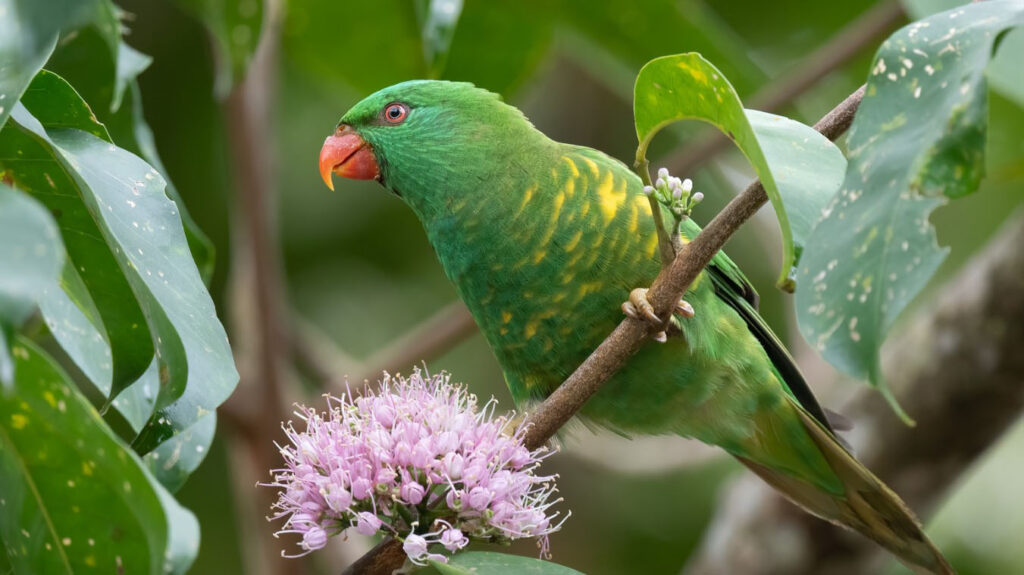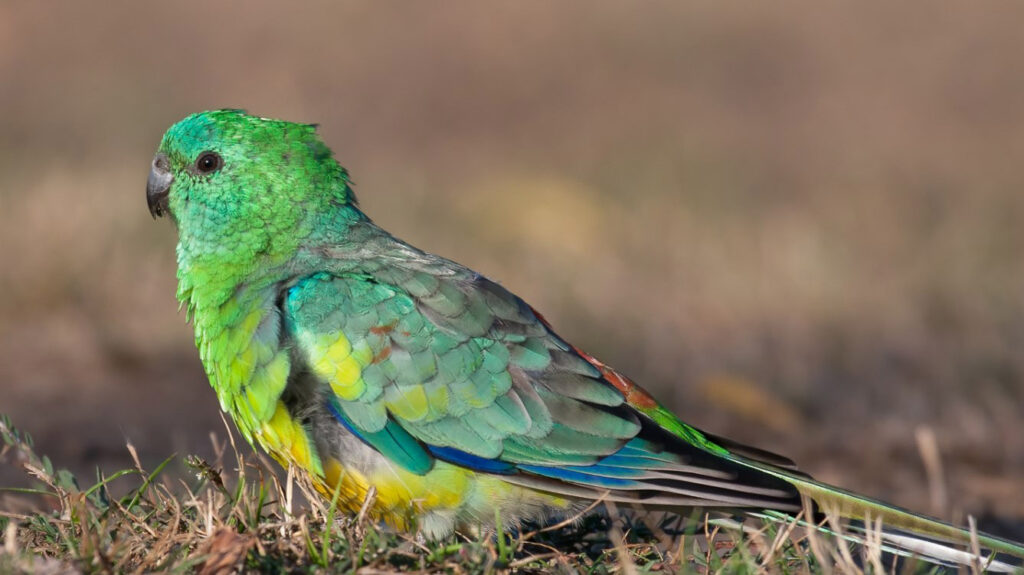The Swift Parrot is a medium-sized, fast-flying parrot. In summer, they breed hollows in old-growth habitat in Tasmania. All birds then fly across Bass Strait to spend Autumn and Winter foraging in suitable habitats – usually temperate woodlands and forests, but sometimes urban areas and other fragmented landscapes – across the southern-eastern Australian mainland. In spring, they return to Tasmania to commence the cycle again.
Long-term monitoring by ecologists and citizen scientists shows that the Swift Parrot population is in a perilous decline and unfortunately, these birds are listed as critically endangered. The most recent published population estimate of Swift Parrots (in the Action Plan for Australian Birds 2020) was 750 individuals, but recent research suggests the population could be as low as 500 birds. This means searches and sightings by birdwatchers are critical to scientific knowledge and conservation of the Swift Parrot.
Swift Parrots aren’t always easy to find, but there are cues that increase your chances:
- Look for profusely flowering eucalypts (especially ironbarks, box and spotted gum)
- Search for other nectar-feeders, like lorikeets and small honeyeaters.
- Learn the calls – Swift Parrot calls have a distinctive loud ‘pip-pip-pip’, particularly as they fly off. Swift Parrots are rarely detected before they call, and they can be heard from a long way away, so it is very important to familiarise yourself with their calls (You can hear the call and learn more about the Swift Parrot here)
Swift Parrot Features:
- 23-26cm in size
- Red face bordered by yellow
- Long, pointy maroon tail
- Bluish face and purple crown
- Adults have a yellow iris
- Red underwings, when seen in flight

They are also commonly confused with some of Australia’s other green parrots such as the Little Lorikeet, Purple-crowned Lorikeet, Musk Lorikeet, Scaly-breasted Lorikeet, Rainbow Lorikeet and Red-rumped parrot.
Little Lorikeet

Habitat: Open forest, woodland, occasionally urban
Location: Eastern NSW and QLD, small Melbourne population
Features: Red face (but lacks a yellow border and blue colours), solid green wings, short stubby tail
Size: 16-18cm
Purple-crowned Lorikeet

Habitat: Drier open forest, woodland, mallee
Location: Widespread in Victoria, but few records further north.
Features: Dark purple crown, red ear patch, short green tail, blue chest in-flight
Size: 17-19cm
Musk Lorikeet

Habitat: Dry open forest, woodland, orchards, urban areas
Location: Endemic to south-eastern Australia, widespread in eastern New South Wales, Tasmania, and in the south-east of South Australia
Features: Long red ear patch, green wings and tail, metallic screeching call
Size: 20-23cm
Scaly-breasted Lorikeet

Habitat: Open forest, woodland, urban areas
Location: Eastern NSW and QLD, small Melbourne population
Features: Red beak, plain green head and tail, yellow ‘scaly looking’ breast, noisy screeching call
Size: 24cm
Rainbow Lorikeet

Habitat: Open forest, woodland, heath, urban areas
Location: The Rainbow Lorikeet occurs in coastal regions across eastern Australia
Features: Colourful, yellow undertail, constant screeching call
Size: 30cm
Red-rumped Parrot

Habitat: Open Grassland, Along watercourses, Urban
Location: South Eastern Australia, most commonly in NSW and VIC
Features: The male is bright green, blue head, red rump, the female is a dull olive-green, with a green rump and faint yellow or light green scales on the belly.
Size: 26cm
Recording a Swift Parrot Sighting
One of the best ways to record a sighting of a Swift Parrot is to take a photo, no matter how poor the quality may be. This can allow us to age the birds, help determine their behaviour and identify the habitat they’re using. Wherever possible, it is also important to document:
- Date and time of observation
- Location (as specific as possible)
- Number of Swift Parrots seen (and/or heard)
- Behaviour and other species present
- The presence of flowering eucalypts, lerp, or other food sources
If you would like to record a sighting of a Swift Parrot, visit birdata or, if you are a more experienced birder, you can participate in the annual Swift Parrot Search.

